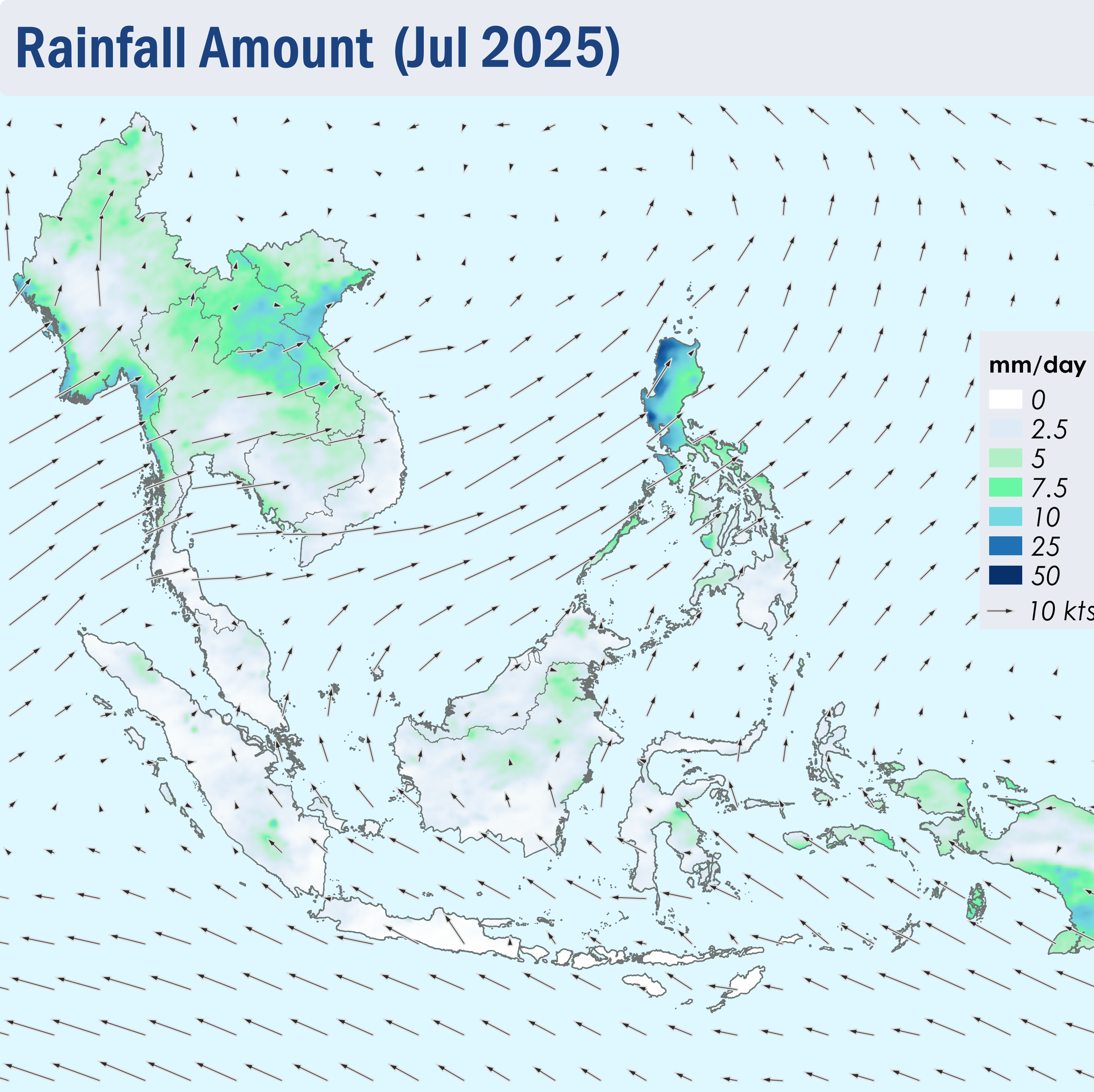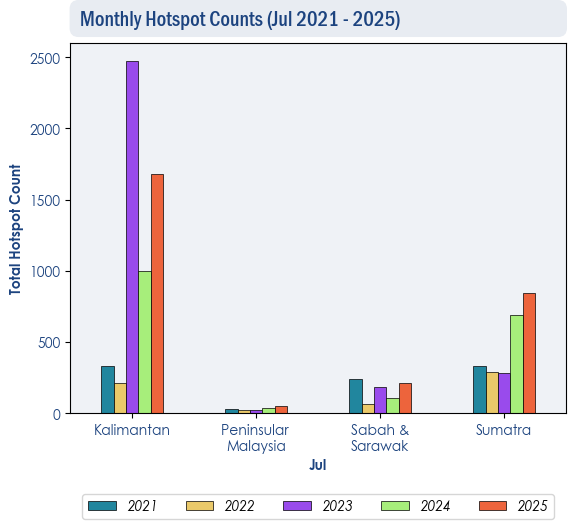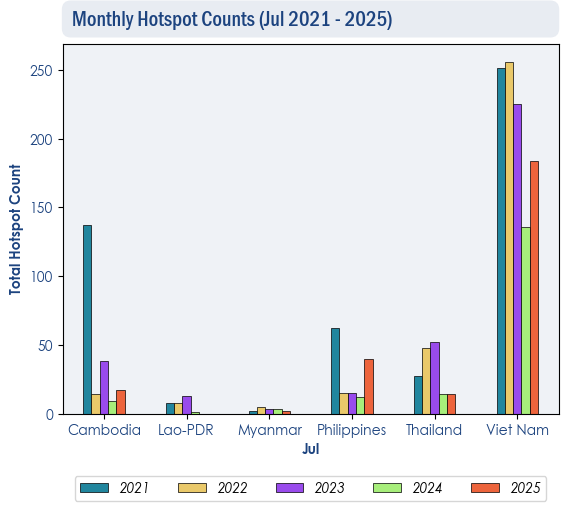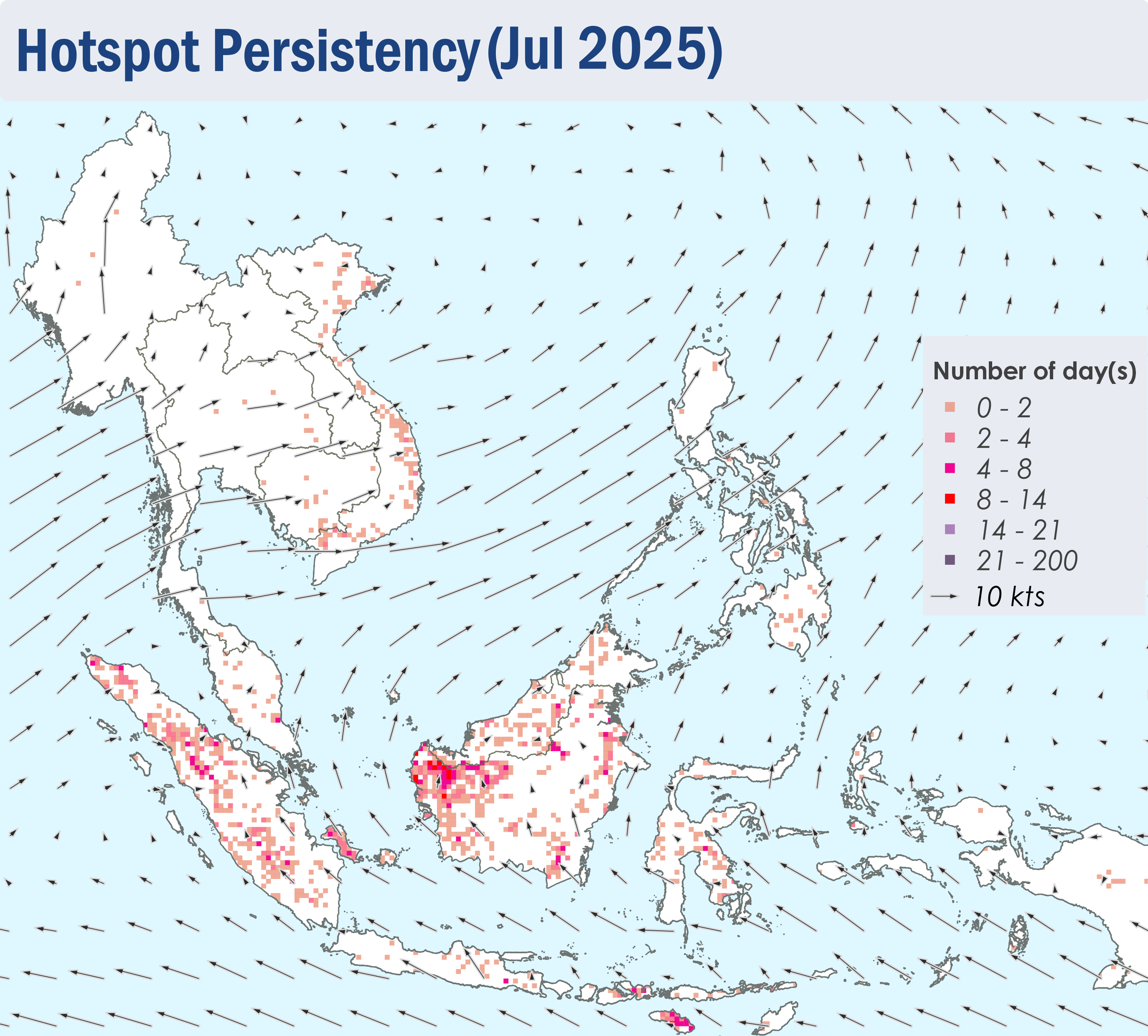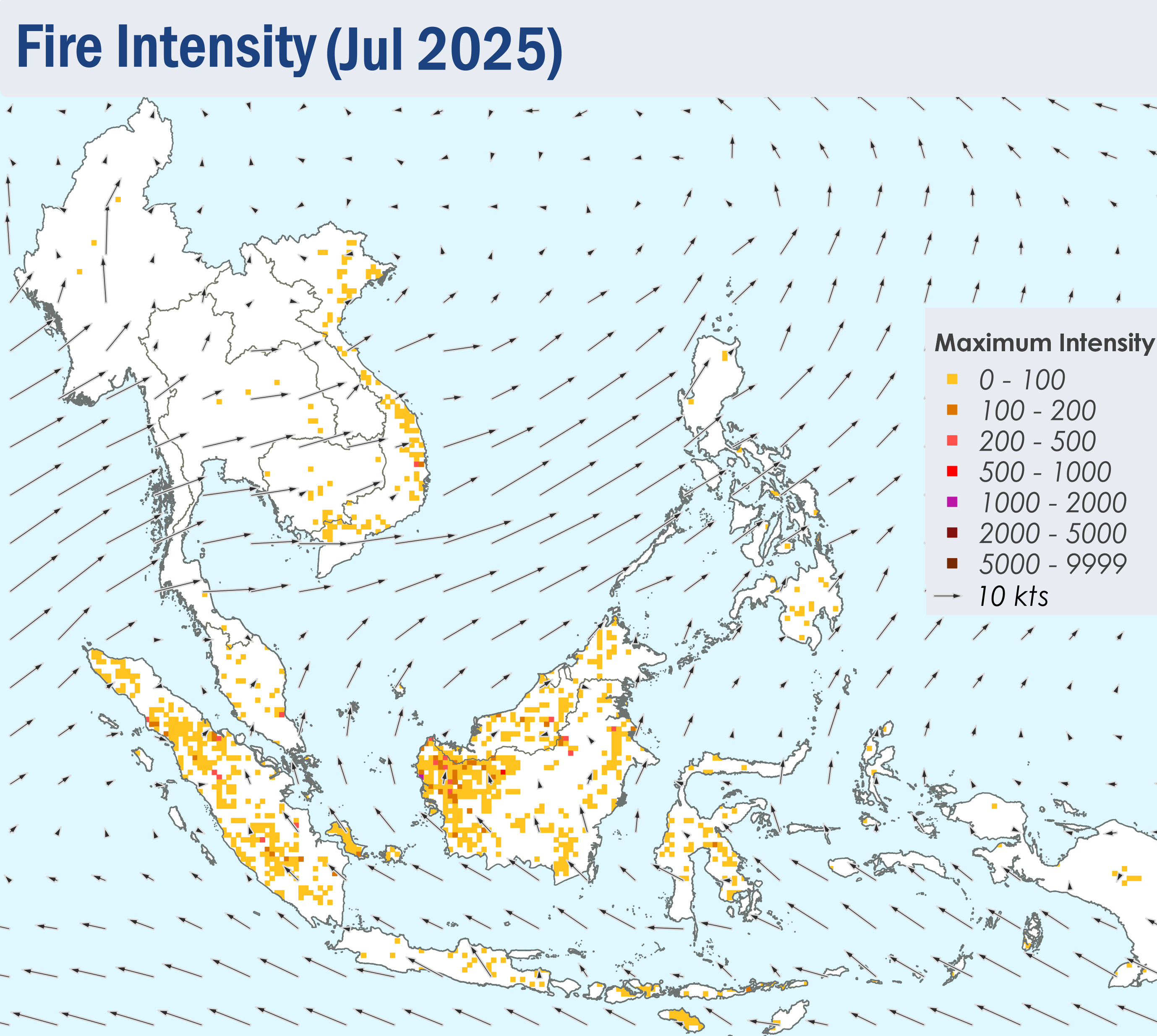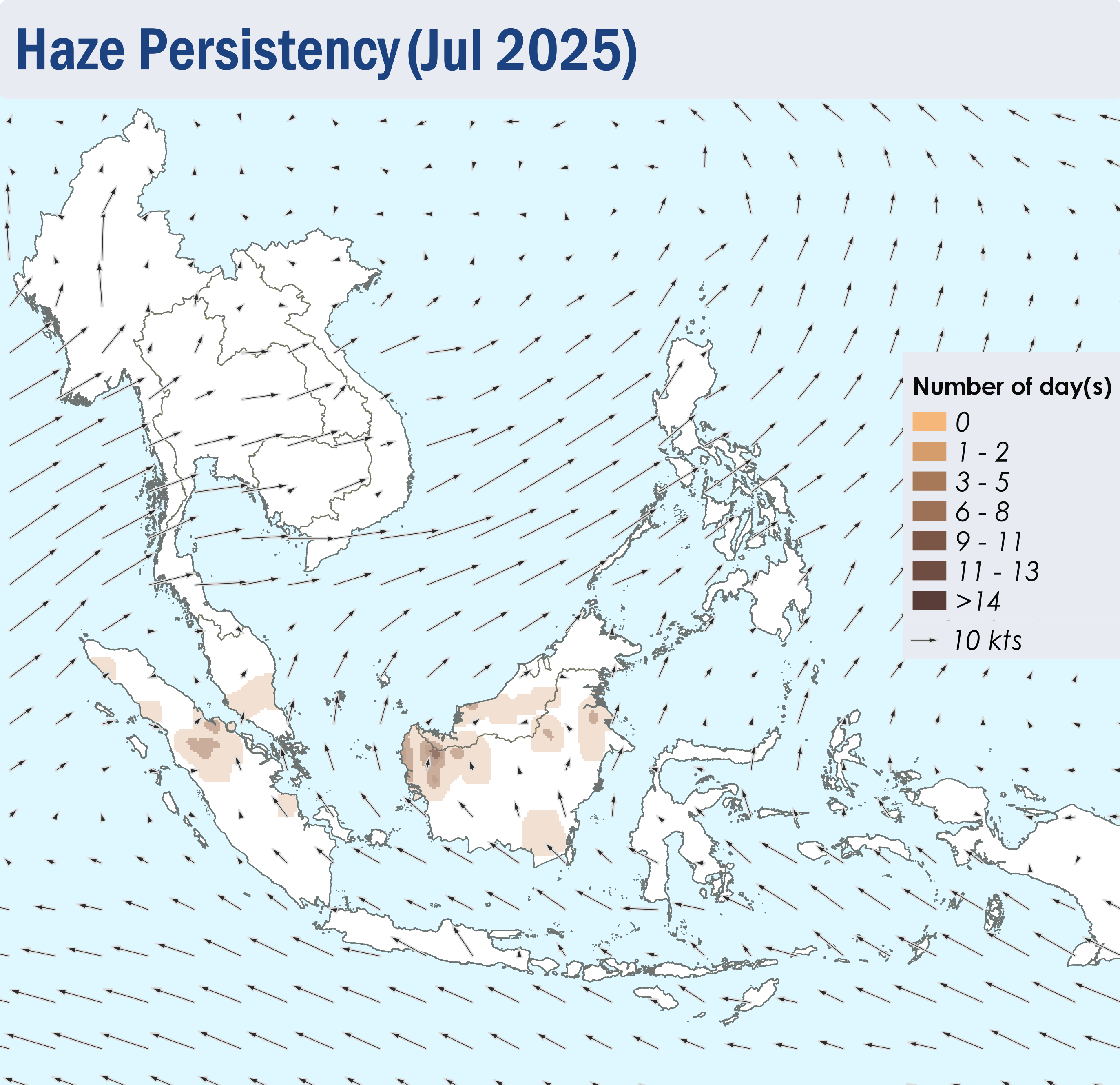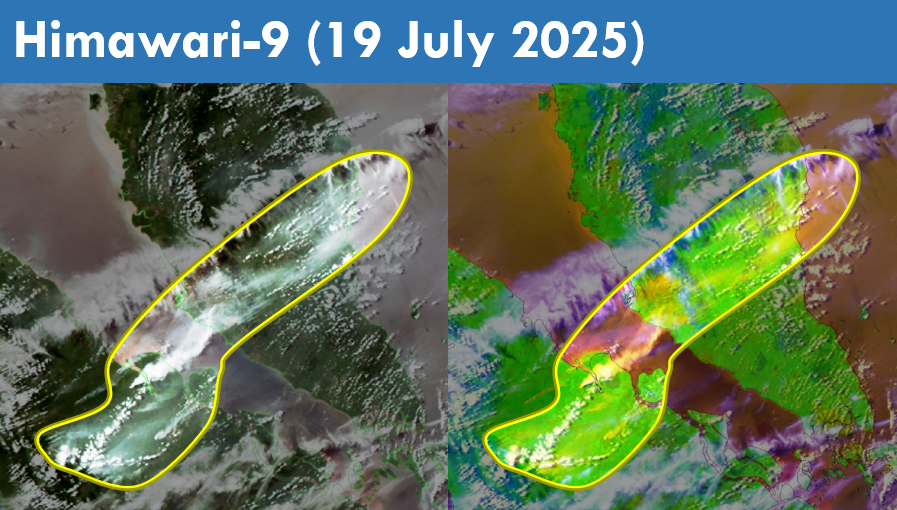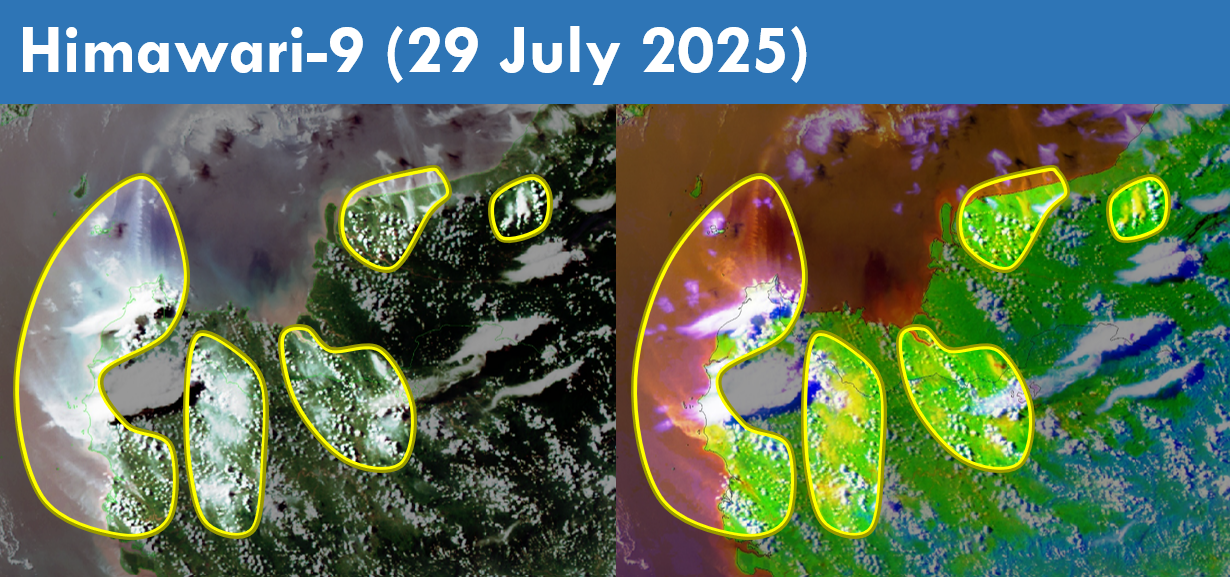Review of Regional Haze Situation for July 2025
1.1 Southwest Monsoon conditions persisted over the ASEAN region throughout July 2025. The prevailing winds over the northern ASEAN region blew from the southwest to west. Over the southern ASEAN region, the prevailing winds blew mostly from the southeast to south, except for the winds over the equatorial region which were light and variable in direction (Figure 1).
1.2 Showers were observed over the southern ASEAN region during the first half of July 2025, apart from Java and the Lesser Sunda Islands where it was dry (Figure 1). During the latter half of the review period, dry weather was observed over parts of Kalimantan, Peninsular Malaysia and Sumatra. On 19 July 2025, the Alert Level 2 for the southern ASEAN region was activated due to an escalation of hotspot and smoke haze activities and heightened risk of transboundary smoke haze occurrences in the region. In contrast, the northern ASEAN region experienced wet weather in July 2025, with heavy precipitation recorded over the northern parts of the Philippines due to the influence of Typhoon CO-MAY and Tropical Cyclone WIPHA.
1.3 There was a rise in hotspot activity over the southern ASEAN region due to periods of drier conditions, with hotspot counts higher or comparable to previous years (Figure 2). Notably, Sumatra saw the highest hotspot count over the last 5 years. The hotspot counts for the northern ASEAN region were lower or comparable to the past few years (Figure 3).
1.4 During the latter half of July 2025, there was an increase in hotspot activities in most of the southern ASEAN region, particularly over the western parts of Kalimantan and the central parts of Sumatra where more intense and persistent fires were observed (Figure 4). Slight to moderate smoke plumes were observed over parts of Borneo, Sumatra and Peninsular Malaysia, with transboundary smoke haze observed to drift from the central parts of Sumatra into Peninsular Malaysia and from the western parts of Kalimantan into Sarawak (Figure 6, 7, 8). The hotspot activity over the northern ASEAN region remained subdued under the prevailing wet weather (Figure 4).


